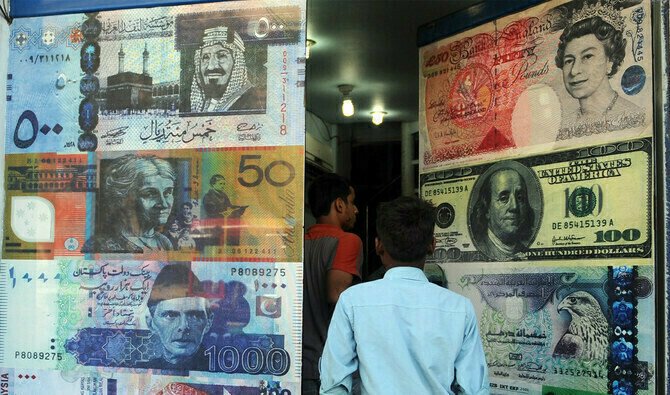June 16 marks the International Day of Family Remittances, a day adopted by the United Nations to honor the support that millions of migrants send back to their homes. Worldwide, those 200+ million migrant workers now send over a trillion dollars each year to relatives in developing countries. To put that in perspective, remittances to low and middle income countries are expected to reach about $685 billion in 2024 – a sum larger than all official development aid or foreign direct investment combined.
In Pakistan, remittances have become a lifeline. We often hear that overseas Pakistanis are considered a true asset of the country, and the data back it up: during July–April 2024–25, they sent home a record $31.2 billion, about a 31% jump from last year. Even last April saw $3.2 billion arrive from abroad. The State Bank now expects roughly $38 billion by June 2025. Analysts say this money “forms a vital pillar” of our economy, helping stabilize our current account and fuel everyday spending.
But numbers alone do not tell the whole story. Across Pakistan – from the lush fields of Punjab to the mountains of Khyber Pakhtunkhwa and the streets of Sindh to the arid plains of Balochistan – remittances are changing lives in deeply personal ways.
Punjab: Fields of Sacrifice
Last winter I visited a village in southern Punjab and felt the impact immediately. The wheat fields lay quiet in the early morning light, not because of any natural lull, but because so many farm workers are abroad. I met Aliya, a mother of two, whose husband has been working in Saudi Arabia for years.
Every month she receives a small but steady payment that pays for their children’s schoolbooks and medicine for their youngest. Aliya said quietly that life without her husband around is lonely: she wishes he could see their baby daughter grow up. But as long as he stays away for work, she has learned to be strong for her children.
Sindh: Distant Hands
In a dusty Sindh town I met Razia, a widow who runs a small tea stall by day and cares for her two granddaughters by night. Her son went to work in Dubai before the girls were born. Razia showed me photographs on her phone: her son in a welding workshop in the UAE, and him on video calls, waving to the kids.
She then showed me her bank record – a screenshot of small transfers in UAE dirhams. Each small transfer covers the girls’ school fees and winter kerosene. Without it, she says, the children wouldn’t eat meat or have warm clothes. Raising three generations on her own has left Razia tired and anxious, often praying at night for her son’s safe return.
Khyber Pakhtunkhwa: Mountains and Memories
High in the hills of Khyber Pakhtunkhwa I found similar scenes. Whole villages depend on a single paycheck from abroad. Abdul, a young schoolteacher in a remote valley, told me about his family: all four of his brothers work overseas in the Gulf and Europe. He raises their children and elderly parents at home.
Over cups of tea, he described the evenings when his brothers send a portion of their wages. The house is heated and the generator runs, and the children go to bed fed and with lights on for lessons. But there are also hard days: Abdul and his elderly mother sometimes skip meals to save what little they have.
Still, Abdul beams with pride that his nieces and nephews will be the first in their village to attend university, thanks to his brothers’ sacrifices.
Balochistan: Silence and Strength
Even in Balochistan’s remote settlements, remittances arrive. I once visited a mountainous community with no paved roads, where no young man could find legal work. Nearly every household told me their eldest son or brother was in Muscat or Doha, sending back anything he could. One grandmother, Bibi, sat outside her mud house sewing fabric.
When I asked how she managed, Bibi quietly showed me a photo on her phone of her son abroad and a note of the small sum he had sent this month: just a few hundred rupees. She smiled and said, “He sends what he can, and we live. We pray for his health.” The children here wear patched clothes but still manage to go to school thanks to that meager income.
Read More: Pakistan’s Remittances Hit Record $4.1B in March
Each of these encounters reminded me that behind the statistics are lives. Yes, last March saw remittances jump 37% to a historic $4.1 billion – the highest ever in one month for Pakistan – but for Aliya, Razia, Abdul and Bibi that number simply meant dinner on the table and education for their children, even as it also meant long nights wondering when they will see their loved one again.
Behind those figures are women quietly stretching every rupee and praying nightly for their loved ones’ safe return. Their resilience is the real backbone of the families left behind.
On this International Day of Family Remittances, we celebrate those who send love from afar. Pakistan’s ties truly span the globe – in dollars and in devotion – and our villages, towns and cities are all stronger because of it. Every remitted rupee is a whisper of solidarity across borders, keeping families together in spirit if not always in person.



